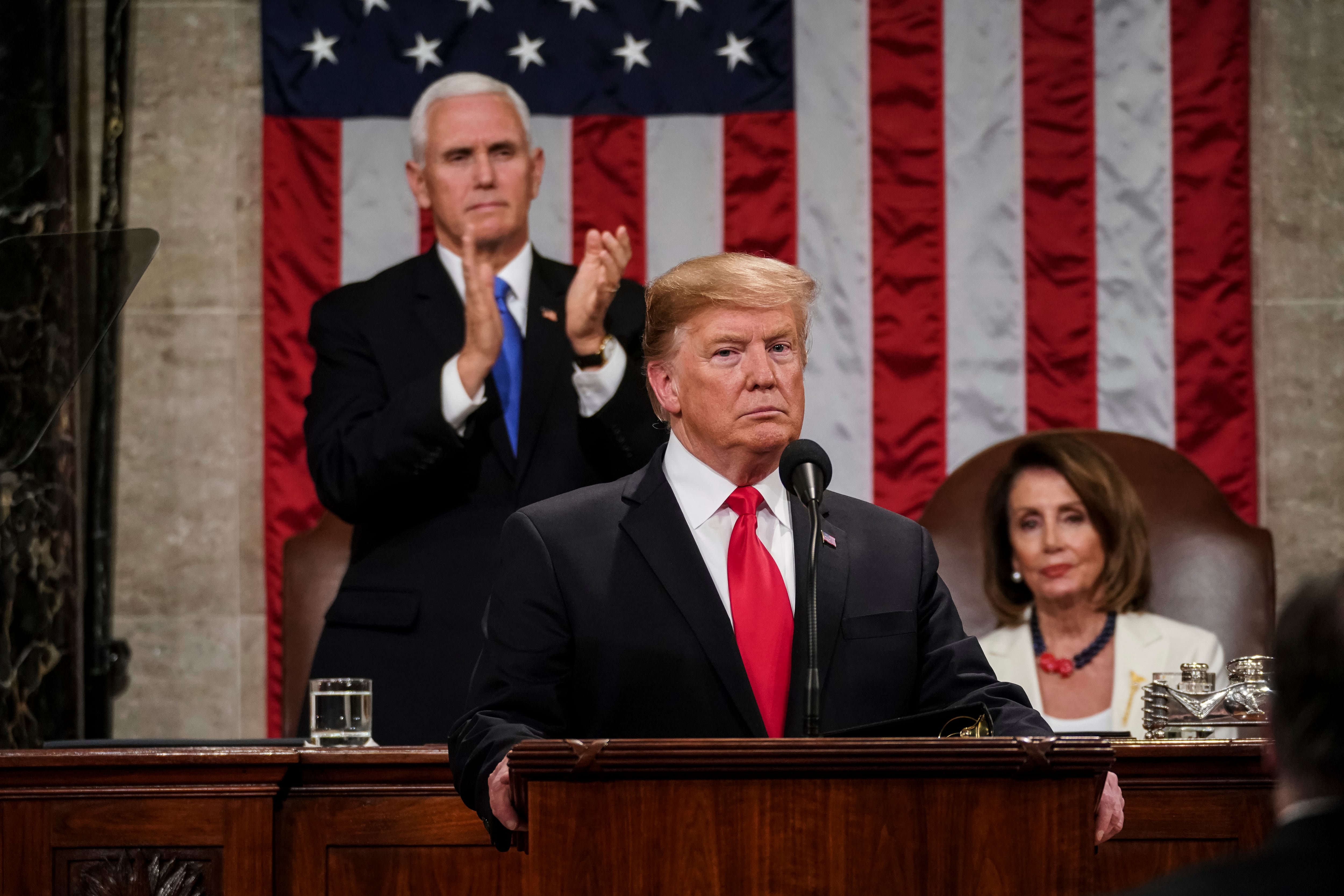The Partnership for Public Service announced that 26 finalists had made it to the last round of consideration for their annual Samuel J. Heyman Service to America Medals, also known as the Sammies.
The awards go to federal employees whose work has improved the federal government and the lives of American citizens.
“This is what you do, and you don’t do it for fanfares, you don’t do it for money,” said Office of Personnel Management acting-Director Margaret Weichert at a May 9 breakfast honoring the finalists.
“You do it because it’s critical, important work, whatever your mission is.”
The finalists announcement comes during the 2019 Public Service Recognition Week, which honors those that serve the government at all levels.
“Y’all have had a tough year with the shutdown, and with the noise and with all that’s going on. And to be able to see folks on focus, on point, serving our neighbors is a remarkable gift to the country,” said Sen. James Lankford, R-Okla., who introduced the Senate resolution commending public servants during Public Service Recognition Week.
The Sammies award feds in five award categories, including one category for career-long public service that was this year named after longtime public servant and impetus behind sweeping government change Paul Volcker.
“The 2019 Service to America Medals showcase our remarkable federal workforce who serve the public good and address many of the country’s greatest challenges,” Max Stier, president and CEO of the Partnership for Public Service, said in a news release.
Paul A. Volcker career achievement finalists:
- Arthur Allen, oceanographer for the U.S. Coast Guard — Pioneered and perfected a modeling program that predicts where people lost at sea will be found.
- William Boyes, environmental health scientist at the Environmental Protection Agency — Conducted important research on the harm that commonly used chemicals have on eyesight and the central nervous system.
- Michael Kozak, senior bureau official at the Department of State — For nearly five decades, helped shape foreign policy to protect U.S. interests abroad and advance democracy and human rights around the world.
- Ann McKee, chief of neuropathology at the Department of Veterans Affairs — Revolutionized scientific research and our understanding of the long-term effects of concussions.
- Venkatachalam Ramaswamy, director of the Geophysical Fluid Dynamics Laboratory at the National Oceanic and Atmospheric Administration — Developed a state-of-the-art modeling system to enhance understanding and prediction of global climate and provide earlier and more accurate forecasts of severe weather events.
Management Excellence Medal finalists:
- Victoria Brahm, medical center director at the VA — Restored the quality and safety of a broken health care center for veterans that had become notorious for unsafe medical practices, excessive opioid use and a toxic work environment.
- Robert Cabana, director of the NASA Kennedy Space Center, and the Kennedy Space Center Senior Management Team — Transformed the historic Kennedy Space Center into a globally distinguished, multi-user launch site for government and commercial space exploration.
- Krista L. Caudle, product manager for traumatic brain injury at the Department of the Army, and the Laboratory Assay for Traumatic Brain Injury Integrated Product Team — Developed, tested and acquired FDA approval for the first-ever blood test that detects mild traumatic brain injury in military service members and civilians.
- Osama El-Lissy, deputy administrator for plant protection and quarantine at the Department of Agriculture — Created a highly effective plan that led the United States to become the first and only country to eradicate the pink bollworm, saving cotton growers tens of millions of dollars annually.
- Shannon Sartin, executive director of digital service at the Centers for Medicare and Medicaid Services, and Team — Led the development of digital tools to make it easier for Medicare patients to access their electronic health records and for doctors to receive payment for the quality, not the quantity, of the care they provide.
- Paul Shute, chief of operational innovation; Christopher Aragao, supervisory veterans service representative; and David Enright management analyst at the VA — Dramatically cut the time and manpower needed to make decisions on service-related mental health claims for veterans, helping tens of thousands of individuals each year receive their benefits faster.
National Security and International Affairs Medal finalists:
- Kara De Castro, management analyst at theNational Nuclear Security Administration — Led pivotal international programs to convert weapons-grade nuclear materials for civilian use and enhanced security cultures to guard against their mishandling and misuse.
- Leticia Pibida, physicist at the National Institute of Standards and Technology — Strengthened national defenses against nuclear and radioactive threats by developing performance standards and tests for detection systems that screen nearly 7 million cargo containers entering U.S. seaports each year.
- Ryan Shelby, diplomatic attaché and foreign service engineering officer at the U.S. Agency for International Development — Provided vital training and resources to help people in Haiti rebuild thousands of homes and roofs ripped apart by a Category 4 hurricane.
- John P. Wagner, deputy executive assistant commissioner at U.S. Customs and Border Protection — Implemented facial recognition systems that simplify and fortify airport security.
- Kurt Yankaskas, program officer for the noise induced hearing loss research program at the Department of the Navy — Identified and implemented solutions to combat noise-induced hearing loss, which affects hundreds of thousands of sailors and Marines.
Safety and Law Enforcement Medal finalists:
- Emily Banuelos, team manager at the Federal Aviation Administration, and the Taxiway Tango Tiger Team — Designed and implemented enhanced surveillance technology that warns when commercial aircraft are lined up to land on a taxiway instead of the intended runway.
- Kristen Finne, senior program analyst and manager of the Department of Health and Human Services emPOWER Program — Developed a system for first responders to quickly locate and assist 4.3 million Medicare beneficiaries who rely on life-sustaining, electricity-dependent medical equipment.
- Emily Joy Haas, senior research behavioral scientist at the Centers for Disease Control and Prevention — Improved the health and safety of mine workers by using behavioral science to influence the adoption of new technologies and practices that reduce their exposure to known hazards.
- Jamie Rhome, storm surge specialist and team lead at the National Hurricane Center — Created a new forecasting model and warning system that more accurately predicts the deadly storm surge caused by hurricanes.
- James McWhirter, assistant special agent in charge; Mark W. Pletcher, assistant U.S. attorney; and the navy bribery scandal team — Uncovered and prosecuted the largest bribery and corruption scandal in the history of the U.S. Navy.
Science and Environment Medal finalists:
- Othmane Benafan, materials research engineer at NASA — Advanced the science and use of a special alloy that returns to its original shape after being heated.
- McMahan Louis Gray, physical scientist at the Department of Energy — Created a game-changing technology that removes carbon dioxide from power plant emissions and absorbs heavy metals, such as lead, from municipal water supplies.
- Daniel Jernigan, director of the Influenza Division at the Centers for Disease Control and Prevention — Led response efforts for dozens of disease crises, including Ebola, SARS and West Nile virus, while greatly improving the country’s ability to identify, prepare for and respond to inevitable flu pandemics.
- W. Marston Linehan, chief of the Urologic Oncology Branch at the National Institutes of Health — Discovered six different genetic origins of kidney cancer and provided the foundation for the development of targeted therapies.
- Christina Neal, scientist in charge of the U.S. Geological Survey’s Hawaiian Volcano Observatory , and the USGS Hawaiian Volcano Observatory Team — Carefully monitored a large and sustained eruption of the Kīlauea Volcano in Hawaii and provided vital updates to protect residents, tourists and property from ash, lava and toxic fumes.
Jessie Bur covers federal IT and management.




